#monastery of batalha
Explore tagged Tumblr posts
Text
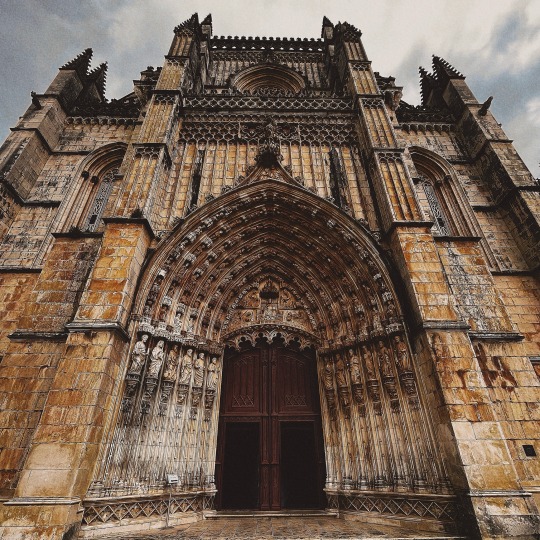
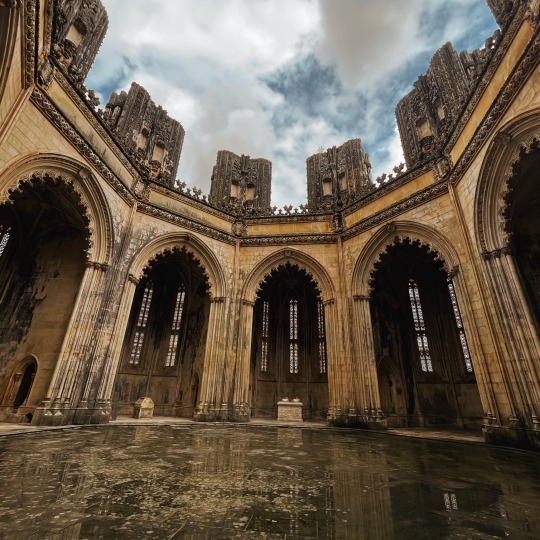
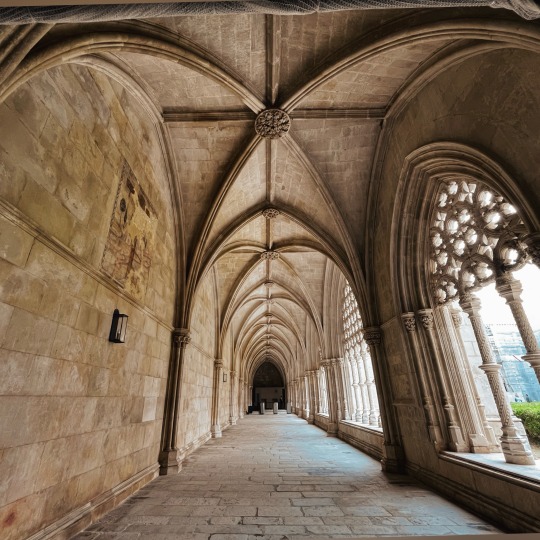

Monastery of Batalha, Portugal (2023)
494 notes
·
View notes
Text

Capelas Imperfeitas, Mosteiro da Batalha (by sergeigussev).
3 notes
·
View notes
Text

Entrada para o Mosteiro da Batalha, PORTUGAL
191 notes
·
View notes
Text
The Monastery of Batalha north of Lisbon is an odd place.
The church and other parts are completed, but the guano festooned area pictured commenced being built in 1385, and remains incomplete.

7 notes
·
View notes
Text

Mosteiro da Batalha. Portugal, 2014.
Photos from my late mom’s Canon Elph.
#travel#portugal#monastery#batalha#art#ecclesiastical#catholic#catholiscism#faith#design#architecture#courtyard#religion#religious
13 notes
·
View notes
Text
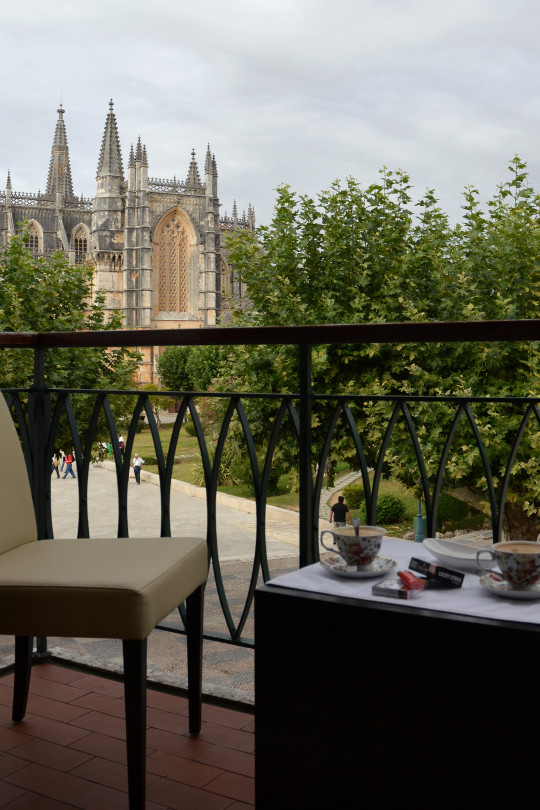
The Magnificent Mosteiro da Batalha
Batalha Monastery is one of the most important Gothic sites in Portugal.
29 notes
·
View notes
Text
Batalha Monastery
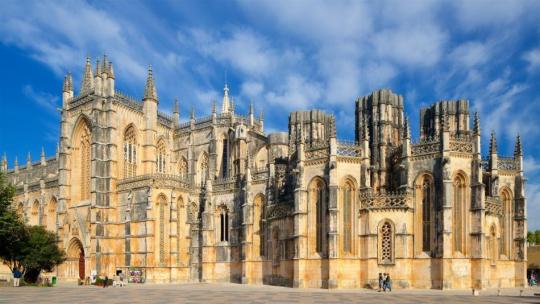
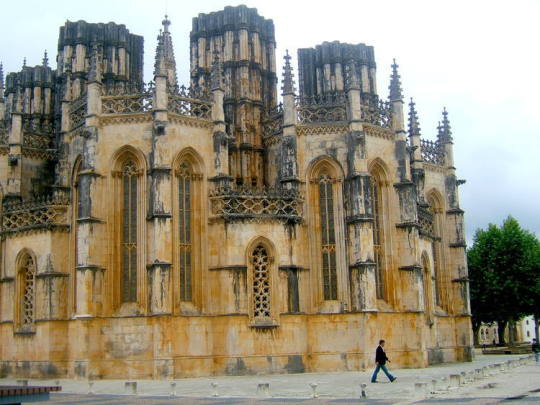

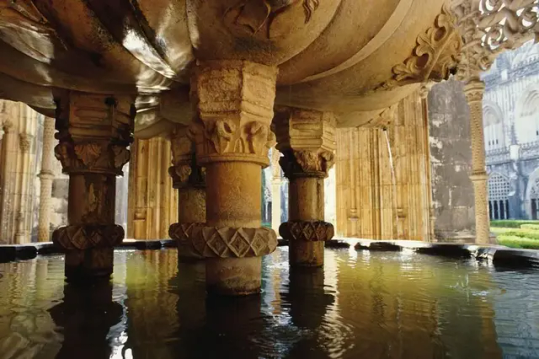

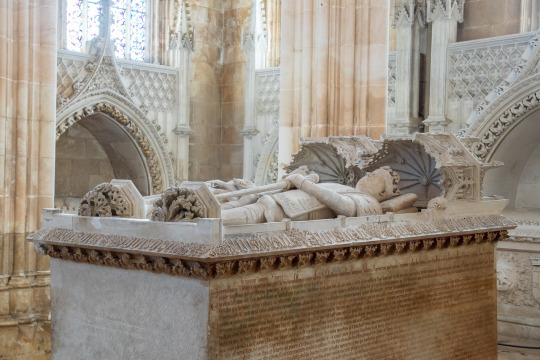


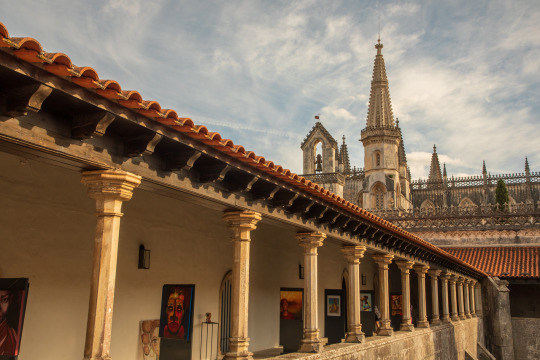

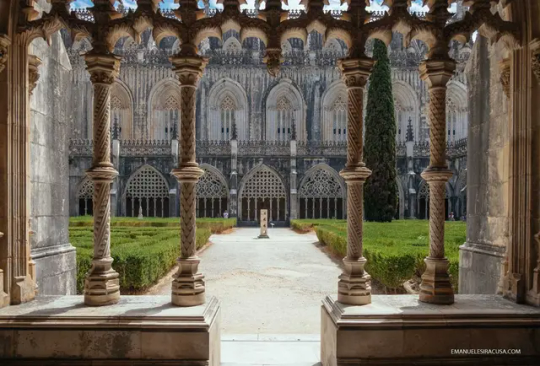

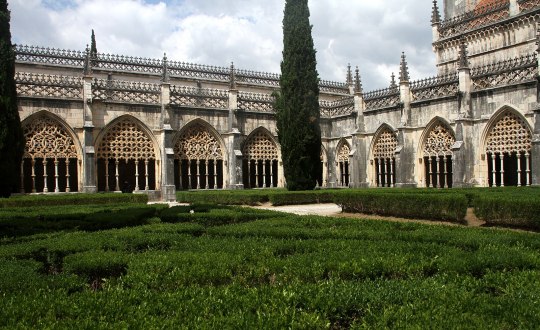

Batalha Monastery is located in Batalha, Portugal. In 1385, the Gothic monastery was built for the Virgin Mary to commemorate the Portuguese victory over the Castilians. The abbey took over a century to build with the construction ending in 1517. The monastery stands apart from the town. The abbey has three buttresses and massive pilasters on the west side of the building, while the east side holds a chapter house for the church choir. The northern side of the complex houses the Tomb of Unknown Warriors. The church is big but narrow in proportion to its height of 106 feet. The church has no ornamental statues, but it does have ten stained glass windows representing scenes from the lives of Christ and Mary, the Visitation, the Epiphany, and more. The square Founders’ Chapel has three bay windows and a central octagon buttressed by eight piers, decorated with Gothic crickets (a hook-shaped decorative element) and arches. The abbey also has unfinished chapels located in an octagonal structure that is attached to the choir of the church, which is only accessible from the outside. The Chapterhouse is overseen by two sentinels who guard the tombs of two unknown soldiers killed in WWI; it serves to remind visitors of the military reasons behind the building of the abbey. This square room was created in a star vault design and constructed by condemned prisoners since this design lacked a central support and was considered a daring building concept at the time. The Renaissance stained-glass window on the east wall dates from 1508 and depicts the scene of the Passion. Batalha Monastery is a UNESCO World Heritage Site open to the public.
0 notes
Text



A walk in Batalha.
1 note
·
View note
Text




Monastery of Batalha, Portugal
Construction began in 1385
#dark academia#light academia#academia aesthetic#classical#academia#escapism#classic literature#books#books and libraries#architecture#historical buildings#old#travel#portugal#royal core#cottage core#gothic#vibe#mood#aesthetic#1300#14th century#monastery
5K notes
·
View notes
Text

Gate of the Batalha Monastery in Portugal.
149 notes
·
View notes
Text

''Blue transfer-printed pearlware dinner plate. Floral border surrounds a central scene depicting Batalha [monastery] in Portugal.'' Inscription: "BATALHA PORTUGAL" 1820-1830 Historic New England
8 notes
·
View notes
Text
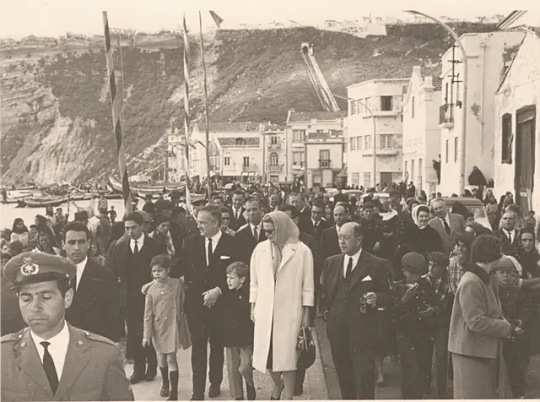
The Monaco princely family's itinerary on April 13, 1964, included several stops and lunch at Estalagem do Cruzeiro, in Aljubarrota.

They also visited the monasteries of Batalha and Alcobaça but only for a couple of minutes.
#grace kelly#princess grace#grace do monaco#principes do monaco#alcobaça#centro de portugal#portugal#cruzeiro#aljubarro
4 notes
·
View notes
Text

Claustro Real, Mosteiro da Batalha (by sergeigussev).
2 notes
·
View notes
Text

MOSTEIRO BATALHA
60 notes
·
View notes
Text
Catherine of Aragon's family-Maria of Aragon's depictions
This time I am going to do something bit different. I'm not going to show you just individual depictions and their sources. But also give the comentary abou their accuracy(or likely accuracy).
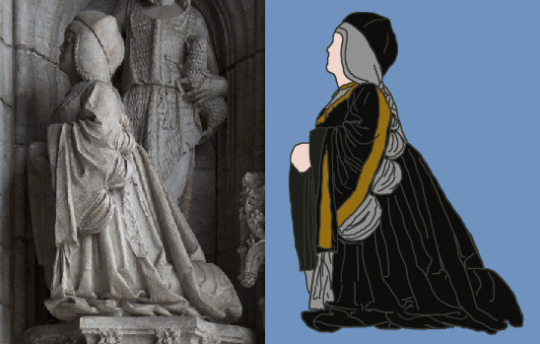
It is about damn time we learnt a bit about what does consist of portuguese fashion, and what doesn't.
Because I suspect among Maria's depictions there is a black sheep(a misidentified portrait). So this post is kind of me trying to assess if my suspicion is right...
Maria tends to be imo the most overlooked of the siblings. She and her husband got along, she wasn't the only son, nor ever became the heir...
But I'd not trust the sources which say she wasn't good looking.(Perhaps not as good looking as some of her siblings)
Not many of her depictions survive, they just as records often fell victim to the earthquakes. But there are two depictions which likely originate from her lifetime, or at least close to her lifetime.
1)Stained-glass window in the High Chapel of the Church of Saint Mary of Victory (Batalha Monastery, Leiria, Portugal), attributed to Francisco Henriques, c. 1510-1513:
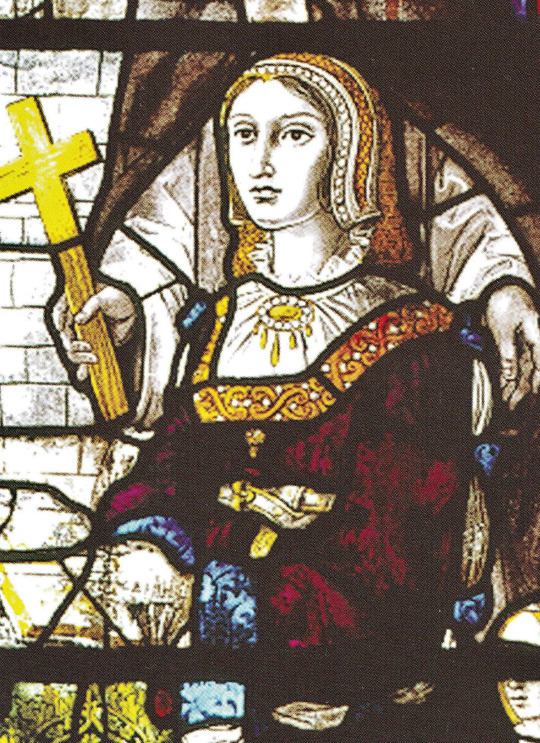
The little red dot in down left imo is out of place imo(window was smatched at some point), and imo belongs elsewhere.
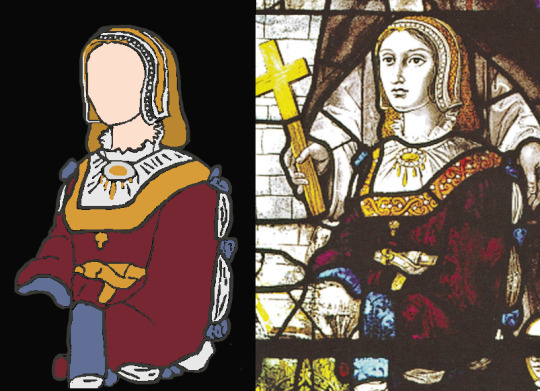
Otherwise I have nothing to say against the dress itself, it looks very Iberian and the similiarities to some of the religious artwork of the day is pretty damn awesome:
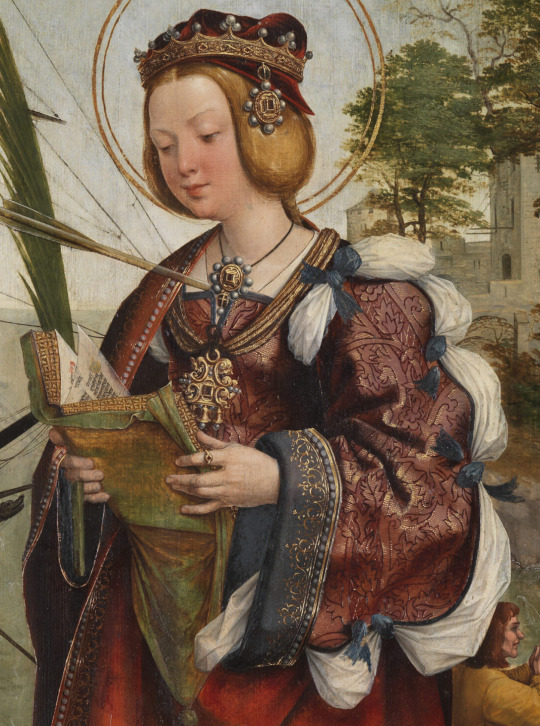
Even colour-scheme is same. (Although obviously different neckline and chemise, but that could be down to personal choice or different season.)
The wide decorative trim made gold and pearls can also be found coassionally in Portuguese art, I found it plenty of time in later source
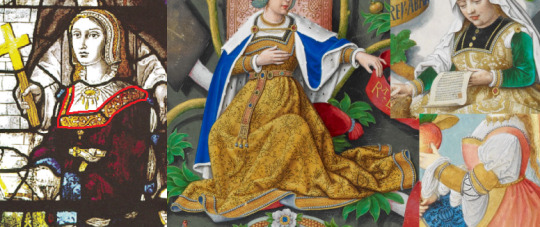
Genealogia dos Reis de Portugal(c.1530-1534)-which has outfits which are partially fiction partially true...
But i have bit of an issue with the headwear. It looks like french hood(at least from front)...kind of.

And I don't think it would be likely for Maria to wear French hood. Yes, it could have been introduced to Iberia by Margaret of Austria or Joanna...but would it linger after they either left or were locked up?
The artist was active in Portugal but native flemish(hence from part of Habsburg Netherlands), and I wonder if perhaps he got bit creative...
...But if you know a bit about french hoods...this is not historically accurate french hood of the time. It might look that way on first glance...but on 2nd? No. It more resembles french hoods after 1530s, than 1510s-where it definitely should have golden frill.
And I did my best to look through surviving portuguese art for depictions french hoods. And I found like 2 in total...which I only suspect might be french hood, because they are oddly depicted.
...And I am wondering if it could be separate headwear...something which resembles French hood at this angle.
So I am not ruling out french hood as impossible, but I am wondering if perhaps Portuguese had something similiar to french hood which was not very popular and got depicted just few times.
2)Maria's statue is from 1517-the year she died. It is located Mosteiro dos Jerónimos(Jeróminos Monastery) where the members of house Aviz are burried, including Maria herself (without effigy):

Idk if it is posthumous or not. But if posthumous, then the artist Nicolau Chanterene would likely be send to create it as commemoration of her life, and since employed by royalty, it's likely he'd have best sources about Queen...perhaps including access to her dresses etc.
The kneeling statue lost its hands(probably in earthquake), but it's still fine example of obviously iberian fashion:
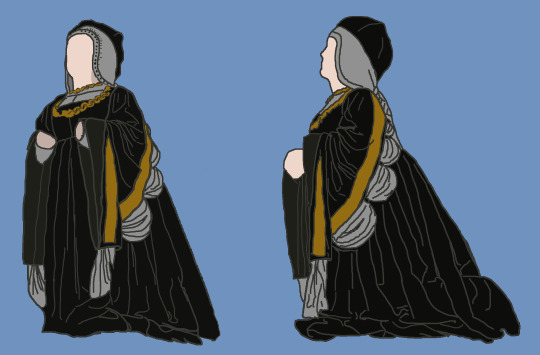
The cofia de tranzado, the fabulous sleeves...with bit of them upturned. All colours were picked by me...and it's obvious why I made the chain in gold, but why the wide trim in gold?
-because in closeup it has this kind of pattern, and I can't imagine it being anything other but golden with such pattern.
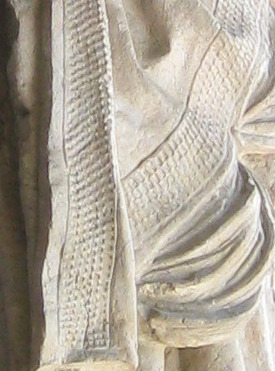
I could be wrong interepreting the statue, but the statue itself screams historical accuracy.
This painting has similiar golden trim imo-Nursing Madonna by Defendente Ferrari, in Uffizi Gallery:

(Although here sat directly at edge.)
Directly from Portugal is Retábulo de Santa Catarina(Museu Nacional de Arte Antiga, Lisbon) from allegedly 1540s(imo that's not correct date), where figure of St. Catherine has dress which look very close to Maria's:
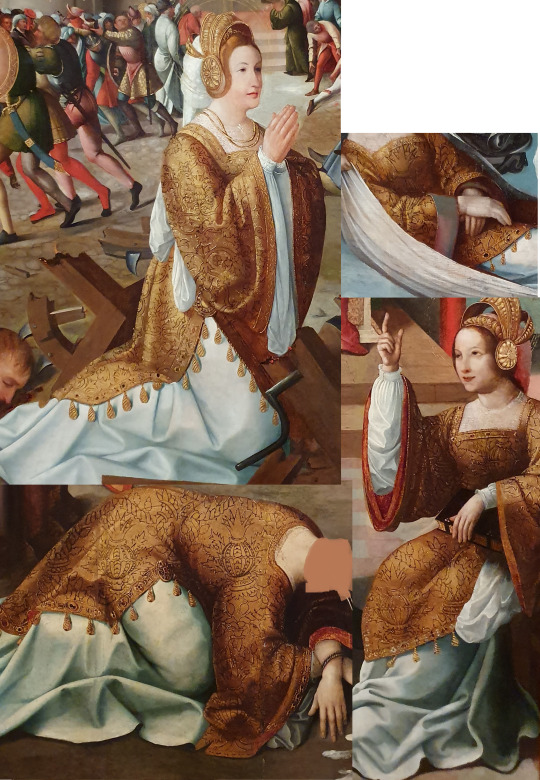
(I covered the cutt off neck. I don't want to breech any guidelines.)
But those dangling things and metalic headwear-those are the fantasy parts of the costume, and obviously it's much shorter than Maria's dress. But very similiar to fashion of the statue.
3)Portrait of Maria of Aragon, Belem Collection, created around 1720:
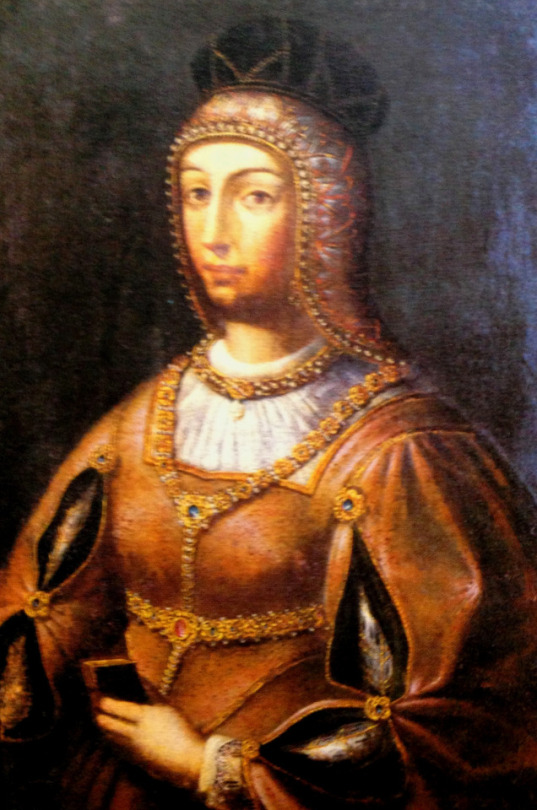
Despite being copy, this one is actually very close to the statue in many aspects. The jewelry placement, the height of waistline-it's same. The headwear is once again cofia de tranzado(perhaps bit more elaborate...)with different style of hat(which I can't place...could be alteration) and the rest of outfit is same as what we see in Spain in 1500s and 1510s.
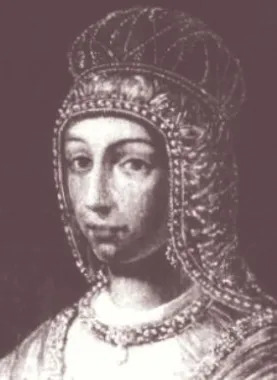
So except hat on top it looks historically accurate. Although cofia de tranzado being this heavily embroidered is probably add-on.
Within same collection there is also portrait of King Manuel, done at same time:

He also has golden gown decorated at edges with pearls and tbh it's quite similiar to yet another portrait of Maria:

4) Maria de Aragão e Castela, Rainha de Portugal
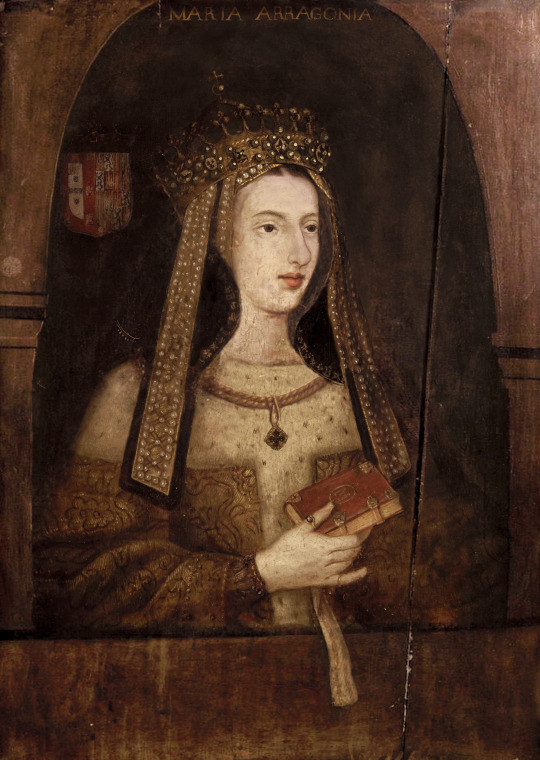
You can find it on wikipedia, which says the source is book called Infantas de Espanha, Rainhas em Portugal. It's author seem as historian, not art historian. And I am not putting blame upon him, for this mess. Overall the amount of weird things is so big, that I shall dedicate separate post to it.
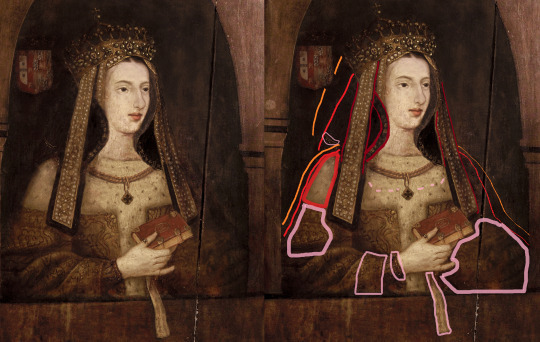
But long story short.
It's heavily altered, possibly photoshopped and never seem very Iberian to me. And after all research I did...I am even more convinced it's not Iberian fashion.
So either the fact somebody altered heck out of it has hid Maria's outfit so well, it no longer looks Iberian...Or it isn't Maria.
I know some of you like this portrait...but we have to be objective here...the misidentification happened in past a lot, and even today happen as well.
And the similiarities to Manuel's outfit in that portrait above could make people think the woman is his wife...Even if she isn't.)
We're going to take deep dive into the issue and then make conclusions. In meanwhile don't use it as inspiration for costume of Maria of Aragon. Seriously don't.
5)Fons Vitae by Colijn de Coter, 1518-posthumous depiction:
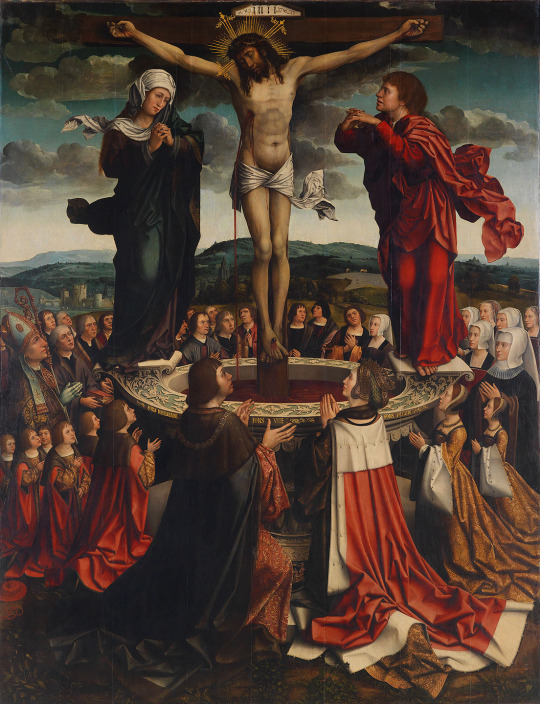
Is located in Museu da Misericórdia do Porto, Portugal. At lower part of painting is depicted King Manuel's family.
But I have to point out, that the artist never went to Iberia...So there are two opions here. Either the comission and creation occured with sketches of royal being sent to royals, or without.
If without, then these would not need to be accurate at all, and would be just generic figures...
Here the Portuguese princesses are depicted 100% in Netherlandish outfits from head to toe:
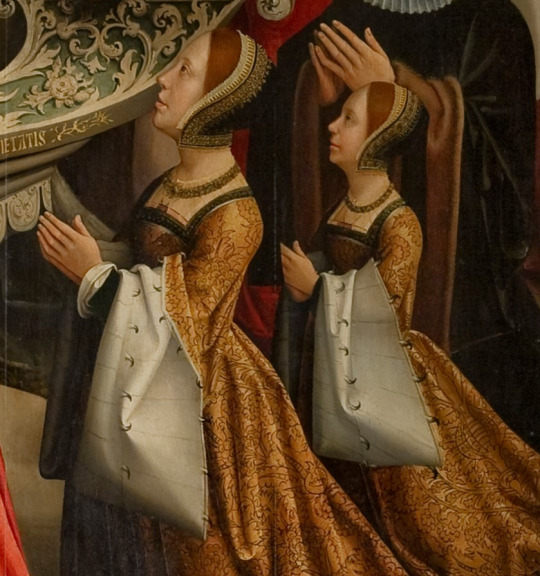
But is Maria too? Tbh idk. The headwear to me look lok more like belonging to 15th century and it's quite odd how she has two strands of hair styled beneat her ear, and then going above her forehead...plus traluscent part over it.
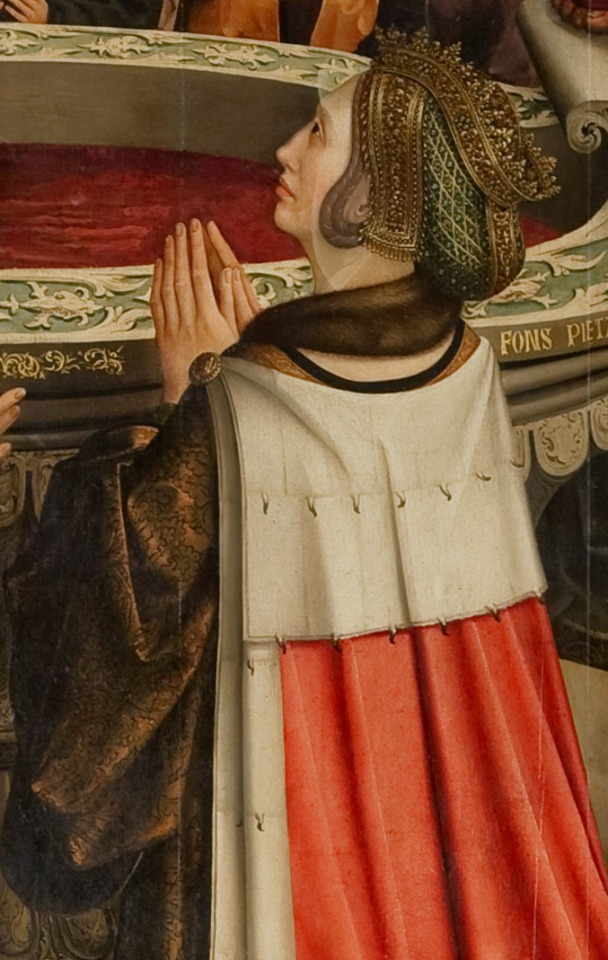
(Back of the dress also have similiar shape from back as that of St. Catherine.)
But then...there are big similiarities between the stain glass headwear and this(if we take the crown away):
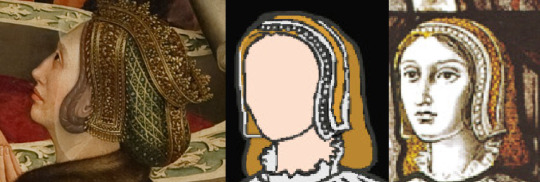

And if it indeed is same headwear...then from behind it's obviously not french hood...it just resembles its later form...in certain angles.
I'd not trust this depiction...100%...but I'd not throw it away as entirely inaccurate either. I just think the artist made it bit too much elaborate, because to him it seemed as those 15th century headwears...which were very elaborate.
I'd use the stain glass as the guide here. But I can't really tell exactly how the traluscent aprt adn hair are supposed to sit...and how layers work...But maybe some of you would like to give it a try.
If any of you know what this headwear is and how it is supposed to look like, write it in the comments, I'd love to know.
By the way...this might be same headwear:

With different back.
So that is all from me today, it was bit different than what I normally do. But I thought it necessary. I hope you've enjoyed it and see you next time.
15 notes
·
View notes
Text



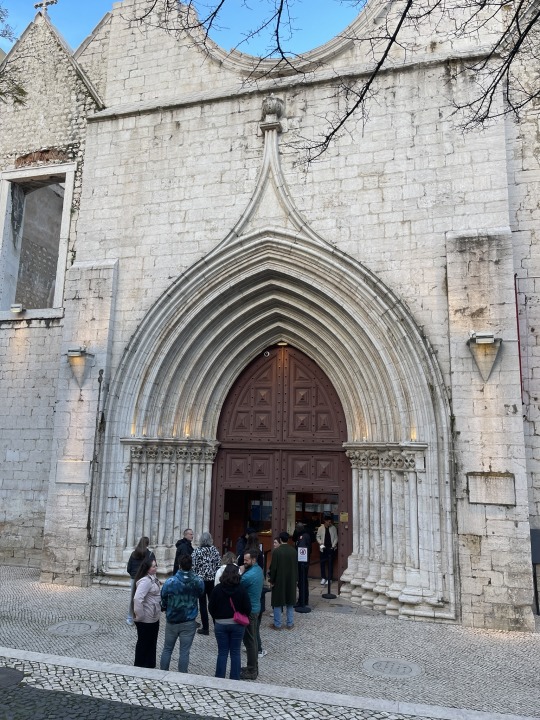
.
Back in town and a quick visit to the Convento da Ordem do Carmo
The medieval convent was ruined during the sequence of the 1755 Lisbon earthquake, and the destroyed Gothic Church Church of Our Lady of Mount Carmel on the southern facade of the convent is the main trace of the great earthquake still visible in the old city.
The Carmo Convent and its Church were built between 1389 and 1423 in the plain Gothic style typical for the mendicant religious orders. There are also influences from the Monastery of Batalha, which had been founded by King John I and was being built at that same time. Compared to the other Gothic churches of the city, the Carmo Church was said to be the most imposing in its architecture and decoration.
5 notes
·
View notes